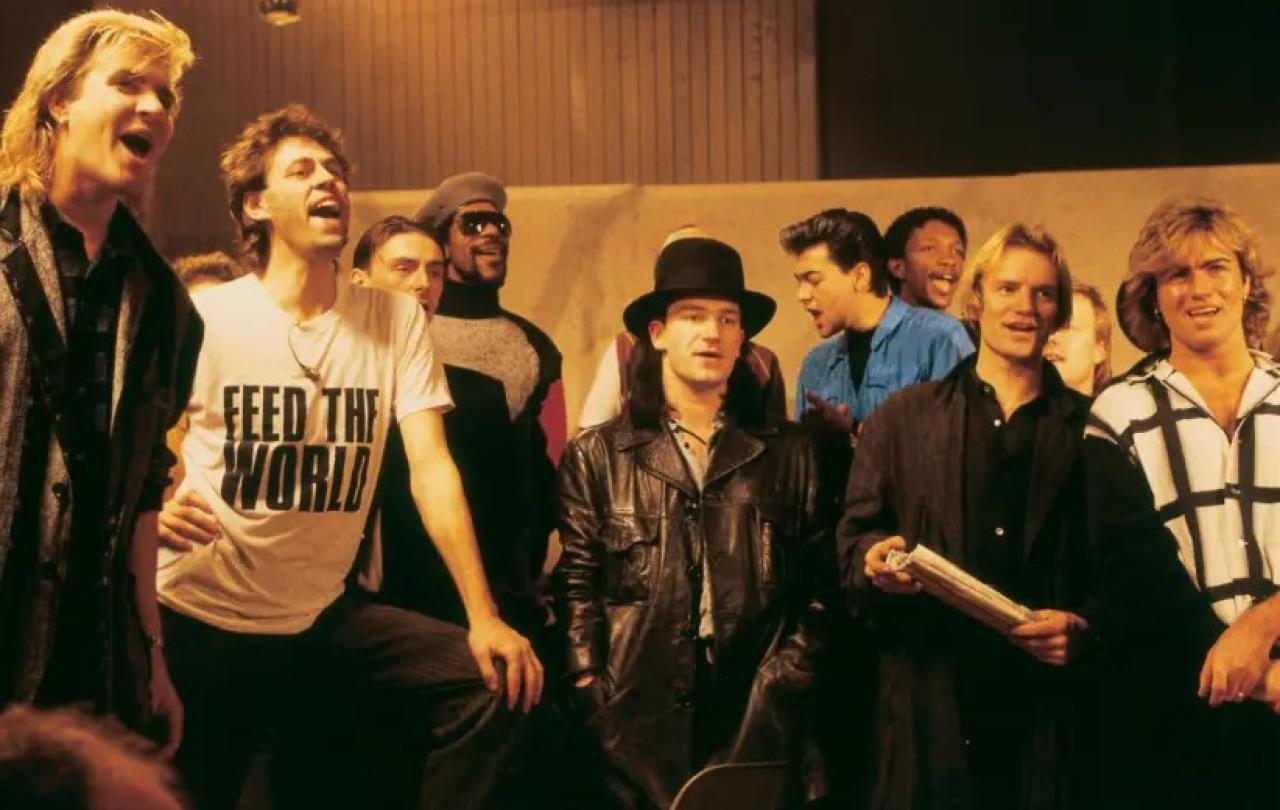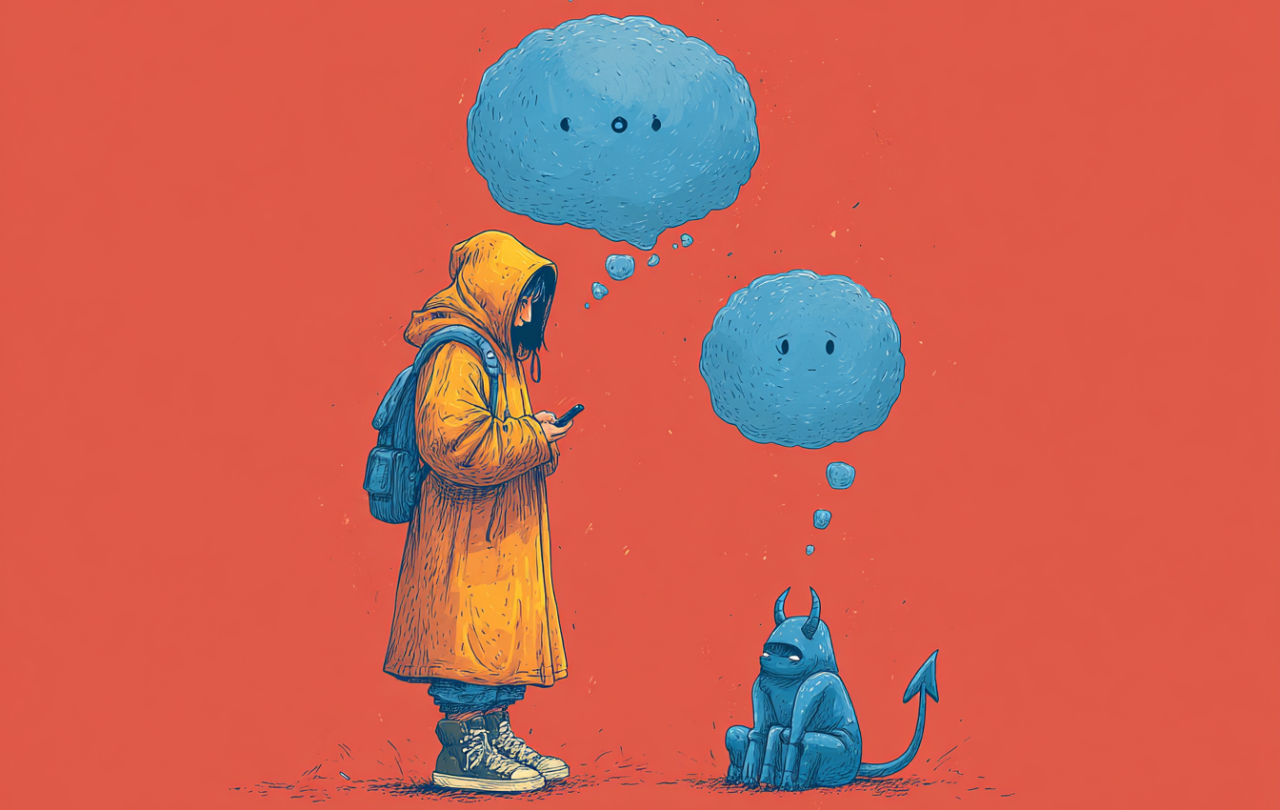
Sometimes a three-minute pop song really can change lives. I should know because 40 years ago a Radio One DJ played a song that changed my life.
I was 12 years old, growing up in relative comfort in Brighton, when I heard the song “Do They Know It’s Christmas?” by Band Aid play for the first time on the radio. I remember being moved by the lyrics:
"There's a world outside your window, and it's a world of dread and fear, where the only water flowing is the bitter sting of tears."
As I reflected on the song, I was overwhelmed by the great inequalities in the world. I had food on the table every day, while people in other parts of the world were struggling to survive without even the most basic of necessities. I had felt so desperate watching Michael Buerk’s TV reports of children suffering in the devastating “biblical” famine in Ethiopia: suddenly, with this song, I was struck by the realisation that perhaps there was something I could do to make a difference, after all.
As a child, I did what Bob Geldof encouraged me to do: I bought the single, wore the T-shirt, and contributed some of my pocket-money. But it didn’t stop there. As Band Aid turned into Live Aid - a global concert featuring my then favourite band, U2 - I felt that the direction of my life was shifting also. I began to ask questions about what I wanted to do with my life and where I could be most effective in tackling global injustice and inequality.
I still find myself asking the same questions today, as well as an additional one – has my life over the past 40 years made the difference I wanted it to make? This is exactly the challenge being put to Band Aid. As the world remembers the fortieth anniversary of “Do They Know It’s Christmas?” with the re-release of the single, could it have fresh impact on a new generation, and was it even effective the first time around?
There are important lessons to learn from Band Aid about whether such initiatives are the intended impact, but often the critiques quickly become excuses not to get involved. I’d like to look at three of those critiques to see if there is any truth in them – and if they can provoke us into doing more, not less, for the cause of global security in general, and international child welfare in particular.
I might not agree with everything about the song, but I certainly believe in the power of guitars over guns. I’d rather see meaningful music influence our world than military force any day.
The first is that the way Africa is portrayed is more harmful than helpful.
While well-intentioned, the depiction of Africa in the Band Aid song, and to be honest, in most charity fundraisers for causes within Africa, has served to perpetuate harmful stereotypes. They paint an oversimplified, monolithic image of Africa as a place of unrelenting despair and degradation, with images of starving children that are supposed to stick in our minds – and do.
Hans Rosling, in his book Factfulness, surveyed global perceptions of Africa and found that most people vastly overestimate the level of poverty. Because media and charity campaigns rarely show the thriving urban centres, technological advancements, or educated professionals that also define Africa, we are given a one-dimensional narrative that actually dehumanizes African people and perpetuates an “us vs. them” mindset where the West are depicted as saviours to helpless African victims.
The truth is far more nuanced. Yes, poverty and tragedy exist, but Africa is also home to modern skyscrapers in cities like Lagos, bustling malls in Nairobi, and world-class stadiums in South Africa. Despite underestimating the development of Africa, we should also be careful of measuring success on how many modernised metropoles we can find there. I have been to villages in Uganda, some far off the beaten track, which, while appearing relatively impoverished on the surface, are deeply rich in culture and community. They are aspirational in many ways, where children grow up in the security that extended family can offer.
To portray an entire continent solely through images of suffering is neither accurate nor fair. We – I include myself – still have so much to learn, both about Africa and from the African people.
Then there’s that question. Do they know it’s Christmas? Yes, they do.
The question at the heart of the song—whether Africans know it’s Christmas—has always been problematic. Across Africa, there are over 730 million Christians, many of whom practice their faith with vibrant passion. Not only do they know it’s Christmas, but in many cases, their faith is lived out more actively than by their fellow Christians in Western nations.
Christians across Africa are often at the forefront of societal change, leading in politics, science, and development. From presidents to Nobel Prize winners, their work is rooted in faith and a commitment to their communities. Suggesting otherwise is not only inaccurate but also dismissive of their contributions.
The question needs to be turned back on ourselves: do we know it’s Christmas? Have we added so much tinsel, glitter, sentimentality and consumerism to Christmas that we have lost sight of the incarnation at the heart of the Christmas story – God, seeing a broken world, sent his Son to walk alongside humanity and offer hope and redemption? Jesus crossed the greatest of cultural boundaries to become one of us and live with us, before paying the ultimate price and dying for us. If we really knew this sort of Christmas, what would this mean for the rest of our lives?
Finally, there’s the problem with the white saviour complex.
Recent critiques, including Ed Sheeran’s reflections on his involvement in charity work, have highlighted the dangers of the “white saviour complex.” This isn’t just about race—it’s about the mindset that Westerners so often have – that we bring the solutions because those in developing nations lack the knowledge, experience, or ability to help themselves.
Sheeran himself faced backlash for trying to assist street children during a Comic Relief project, inadvertently causing harm despite good intentions. Imposing solutions from the outside often overlooks the complexities of local contexts and risks reinforcing imbalances of power. Sometimes our good intentions lead to bad interventions. Sometimes they exacerbate problems that were historically caused by the Western nations in the first place - colonialism, resource exploitation, and the arbitrary drawing of borders, for example.
This cannot be an excuse to do nothing. This is a vital lesson in collaborating better with our African counterparts before we dare to suggest ways forward. “Nothing about us without us” is a principle many modern charities embrace so that solutions are co-designed with the communities they aim to help, ensuring that aid empowers rather than dehumanizes.
The generosity at the heart of the Band Aid initiative, the desire to show kindness and compassion – and inspire kindness and compassion in others, was an incredible message of hope. It changed my life 40 years ago. Perhaps, as I continue my reflections, it will change my life again. I might not agree with everything about the song, but I certainly believe in the power of guitars over guns. I’d rather see meaningful music influence our world than military force any day. I don’t mind whether movements for positive change are instigated by musicians or politicians.
Most importantly for me, wherever there is conflict, I pray that the real meaning of Christmas will be discovered.
Join with us - Behind the Seen
Seen & Unseen is free for everyone and is made possible through the generosity of our amazing community of supporters.
If you’re enjoying Seen & Unseen, would you consider making a gift towards our work?
Alongside other benefits (book discounts etc.), you’ll receive an extra fortnightly email from me sharing what I’m reading and my reflections on the ideas that are shaping our times.
Graham Tomlin
Editor-in-Chief





